Fermenting Beer with Fermentis SafAle T-58 Yeast
Published: July 23, 2025 at 6:32:58 AM UTC
Last updated: November 30, 2025 at 8:22:01 PM UTC
Fermentis SafAle T-58 yeast is a favorite among brewers for its ability to create complex, fruity flavors in beer. It's perfect for brewing styles needing a balance of esters and phenolics, like Belgian ales and some wheat beers. This yeast strain boasts a high fermentation rate and can work well across a broad temperature range. Its versatility makes it suitable for a variety of brewing needs. Its unique characteristics make SafAle T-58 an excellent choice for both homebrewers and commercial breweries. It allows for the creation of distinctive beers with unique flavor profiles.
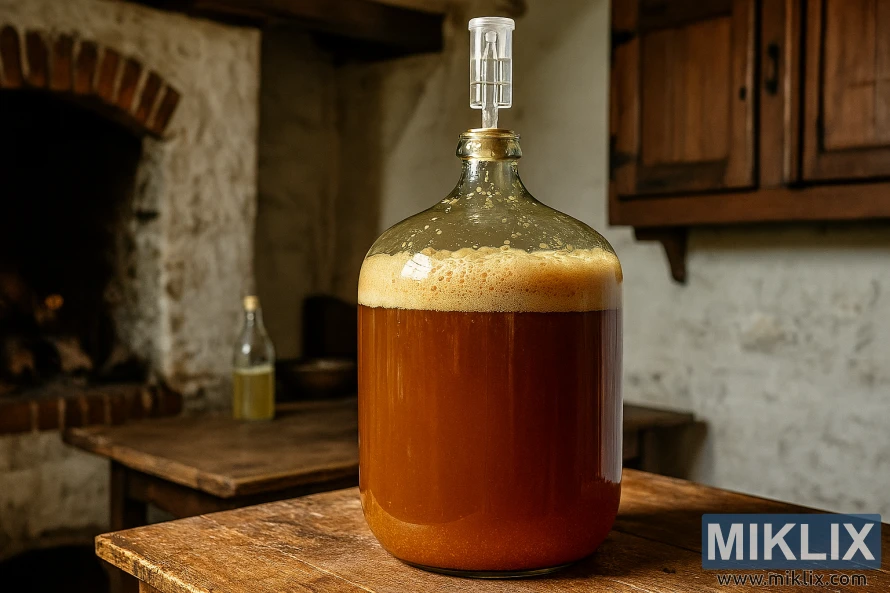
Key Takeaways
- SafAle T-58 yeast is suitable for brewing complex and fruity beer styles.
- It has a high fermentation rate and can ferment at a wide range of temperatures.
- This yeast is ideal for brewing Belgian ales and certain wheat beers.
- SafAle T-58 is a versatile yeast for various brewing applications.
- It is a popular choice among both homebrewers and commercial breweries.
Understanding Fermentis SafAle T-58: An Overview
The Fermentis SafAle T-58 yeast strain is celebrated for its neutral flavor profile. This makes it a top pick for brewing a variety of Belgian beer styles. It's prized for its ability to create complex, fruity flavors, typical of many Belgian ales.
Fermentis SafAle T-58 stands out as a versatile yeast for brewers. It boasts several technical specifications that have made it a favorite. Key traits include:
- Medium sedimentation rate, which impacts the beer's clarity and character.
- Formation of a powdery haze when resuspended in beer, showing its rehydration capabilities.
- Production of total esters and total superior alcohols, enriching the beer's flavor and aroma.
Using Fermentis SafAle T-58, brewers can anticipate a yeast that excels in fermenting a broad range of wort gravities. It's also adaptable to various brewing conditions. This versatility makes it an excellent choice for brewers looking to craft a range of beer styles, from Belgian ales to fruity or spicy brews.
The technical specifications of Fermentis SafAle T-58 include:
- Total esters production, which adds to the beer's fruity flavors.
- Total superior alcohols production, shaping the beer's overall character and complexity.
- Sedimentation characteristics, which affect the beer's clarity and stability.
Technical Specifications and Performance Parameters
Understanding the technical specifications and performance parameters of Fermentis SafAle T-58 yeast is key to achieving optimal fermentation results. This yeast is celebrated for its robust performance and versatility in various brewing techniques. It is a favorite among both homebrewers and professional brewers.
The dosage recommendation for Fermentis SafAle T-58 is critical for achieving desired fermentation outcomes. For optimal results, pitching 1-2 grams of dry yeast per liter of wort is advised for ales. Adjustments can be made based on the specific gravity of the wort and the desired fermentation profile.
Temperature is a vital factor in the fermentation process. Fermentis SafAle T-58 can ferment at a wide temperature range, from 59°F to 75°F (15°C to 24°C). This adaptability makes it suitable for various brewing conditions. The ideal fermentation temperature is between 64°F to 72°F (18°C to 22°C) for most ale productions.
The yeast's tolerance to different brewing conditions is a standout feature. Fermentis SafAle T-58 can handle a range of wort gravities. It is known for its ability to ferment cleanly and efficiently, producing consistent results. This makes it an excellent choice for brewers aiming to produce high-quality ales with minimal variability.
- Highly flocculent, resulting in clear beer
- Rapid and reliable fermentation
- Neutral flavor profile, suitable for a wide range of ale styles
- Good tolerance to alcohol, making it suitable for higher gravity worts
By understanding and leveraging these technical specifications and performance parameters, brewers can optimize their fermentation processes. This leads to producing high-quality beers that meet their desired flavor and aroma profiles.
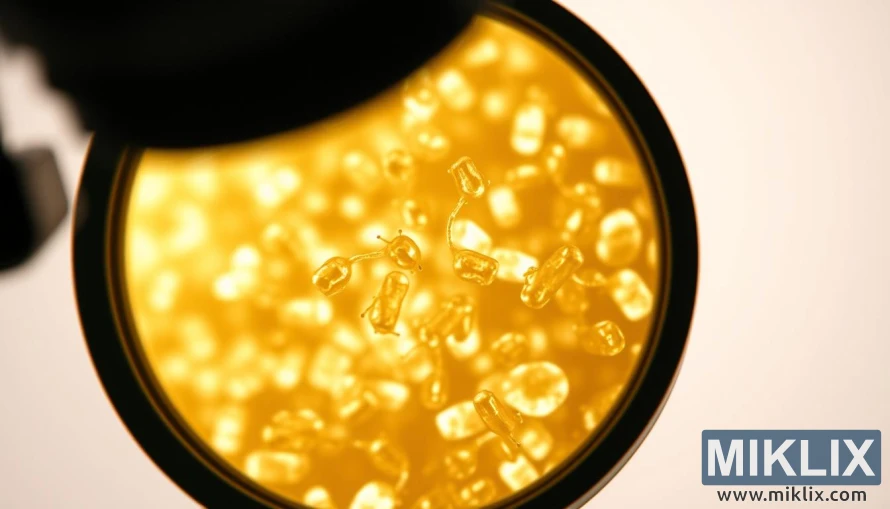
Optimal Fermentation Conditions and Temperature Range
To fully exploit Fermentis SafAle T-58, brewers must manage fermentation temperature with precision. The ideal range for fermentation with SafAle T-58 is 64°F to 75°F (18°C to 24°C). This range is key for the yeast's optimal performance, leading to a clean and efficient fermentation.
Keeping the fermentation temperature within the optimal range is vital. It ensures the yeast efficiently ferments sugars, achieving the desired alcohol content. It also impacts the production of flavor and aroma compounds, critical for the beer's character.
The temperature range influences the yeast's ability to produce esters and other compounds that shape the beer's flavor. A temperature that's too high or too low can result in off-flavors or an unbalanced taste. Brewers must closely monitor the fermentation temperature to keep it within the optimal range.
Some key considerations for optimal fermentation conditions include:
- Maintaining a consistent temperature throughout the fermentation process.
- Avoiding sudden temperature fluctuations that can stress the yeast.
- Ensuring that the fermentation vessel is properly insulated or temperature-controlled.
By controlling the fermentation temperature and maintaining optimal conditions, brewers can maximize Fermentis SafAle T-58 yeast's performance. This results in a high-quality beer with a balanced flavor and aroma profile.
Flavor and Aroma Profile Development
SafAle T-58 yeast strain is renowned for crafting beers with complex, nuanced flavors. It's celebrated for adding fruity, spicy, and phenolic notes, enriching the beer's aroma. This makes the beer's taste profile both rich and varied.
The conditions during fermentation are key in shaping the beer's final taste and smell. Temperature, nutrient availability, and the amount of yeast used all impact the yeast's performance. This, in turn, affects the beer's flavor profile.
Feedback from brewers highlights SafAle T-58's versatility. It can be used to brew a wide variety of beer styles. The yeast's neutral character lets brewers focus on the desired flavors and aromas, ensuring a clean fermentation.
To enhance flavor and aroma, brewers must control fermentation conditions carefully. This means keeping the temperature right and providing enough nutrients for yeast growth and fermentation.
By grasping the traits of SafAle T-58 and managing fermentation well, brewers can craft beers with unique and appealing flavors and aromas.
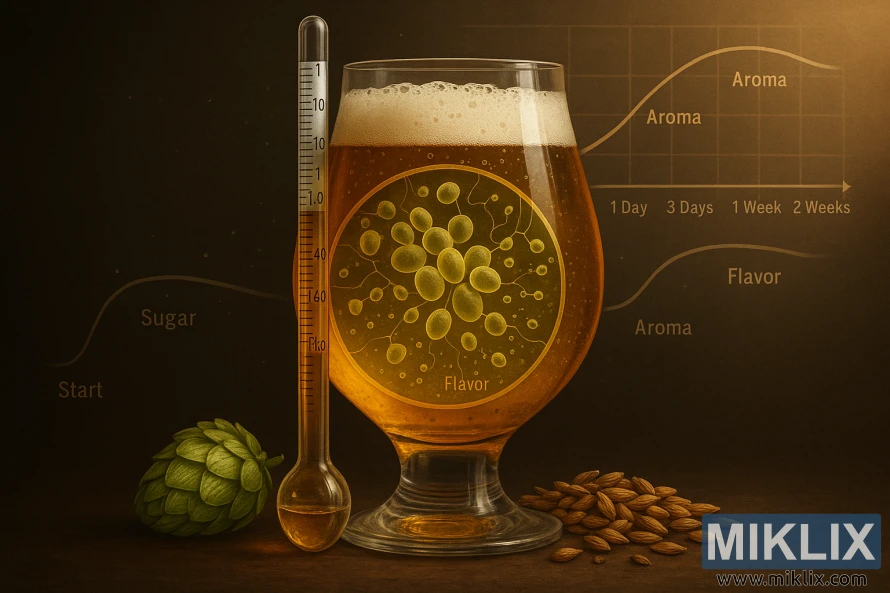
Compatible Beer Styles for SafAle T-58
Fermentis SafAle T-58 yeast is a versatile strain suitable for brewing a variety of beer styles, including Belgian beers and wheat beers. Its unique characteristics make it an ideal choice for brewers looking to create complex and flavorful beers.
The SafAle T-58 yeast strain is well-suited for brewing Belgian-style ales, known for their fruity and spicy flavor profiles. It is also a popular choice for wheat beers, where its ability to ferment at a wide range of temperatures is beneficial.
- Belgian ales, such as Tripel and Dubbel
- Wheat beers, including Witbier and Weissbier
- Saison and other farmhouse-style ales
- Strong ales and other complex beer styles
These styles benefit from the yeast's ability to produce a range of flavor compounds, from fruity esters to spicy phenolics. By leveraging the characteristics of SafAle T-58, brewers can create a diverse array of beer styles that are both complex and flavorful.
When brewing with SafAle T-58, it's essential to consider the optimal fermentation conditions and temperature range to bring out the best in this versatile yeast strain.
Preparation and Pitching Methods
To achieve optimal fermentation results, understanding the preparation and pitching methods for SafAle T-58 is essential. Fermentis SafAle T-58 yeast can be pitched directly into the fermentation vessel or rehydrated before pitching.
Direct pitching involves adding the dry yeast directly to the wort. This method is convenient but requires careful handling to ensure successful fermentation. The recommended dosage for direct pitching is typically between 0.5 to 1 gram per liter of wort, depending on the specific gravity and fermentation conditions.
Rehydrating the yeast before pitching can help improve fermentation consistency, even in cooler wort temperatures. To rehydrate SafAle T-58, mix the yeast with water at a temperature between 90°F to 100°F (32°C to 38°C). The recommended rehydration ratio is 1:10 (1 part yeast to 10 parts water). Gently stir the mixture and let it stand for 15 to 30 minutes before pitching.
Proper sanitation and preparation of the fermentation vessel are critical to prevent contamination and ensure healthy fermentation. The fermentation vessel should be thoroughly cleaned and sanitized before use.
By following these preparation and pitching methods, brewers can optimize the performance of Fermentis SafAle T-58 yeast. This leads to consistent, high-quality fermentation results.
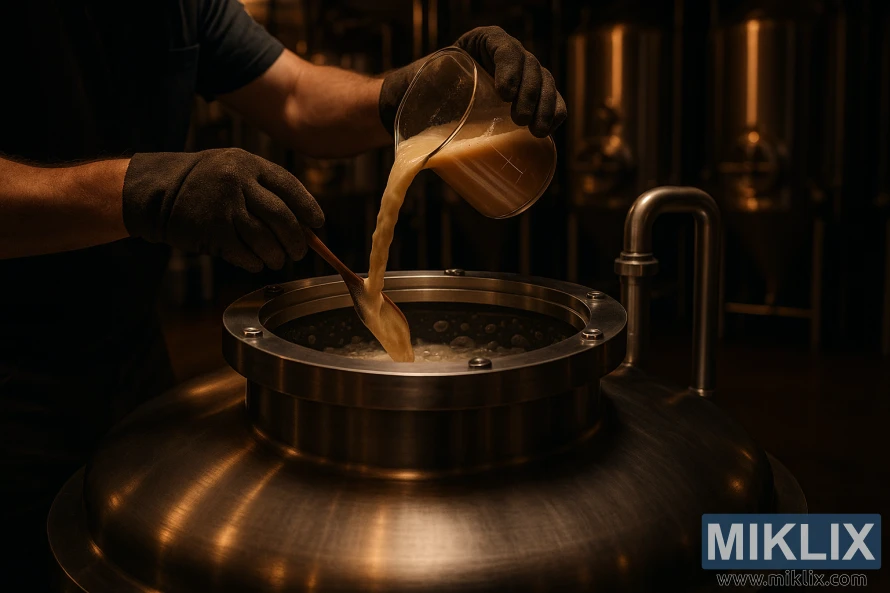
Monitoring Fermentation Progress
Monitoring fermentation progress is key when brewing with Fermentis SafAle T-58 yeast. This involves tracking specific gravity, observing fermentation signs, and making necessary adjustments. These steps ensure a healthy fermentation process.
Tracking specific gravity is a critical part of monitoring fermentation. It measures the wort's density before and after fermentation. This helps determine the alcohol content and confirms fermentation is on track.
Brewers should watch for several signs of fermentation. These include:
- Bubbles in the airlock
- Krausening (foamy head on the fermenting beer)
- Decrease in specific gravity
Adjusting fermentation conditions may be needed to optimize the process. This could involve changing the temperature or ensuring the fermentation vessel is sealed properly.
By closely monitoring fermentation and making adjustments as needed, brewers can achieve a successful fermentation with Fermentis SafAle T-58 yeast.
Advanced Brewing Techniques with T-58
SafAle T-58 is more than just a yeast strain; it opens doors to advanced brewing methods and unique beer flavors. Brewers appreciate its versatility and strength, making it perfect for experimental brewing.
Using SafAle T-58, brewers can explore different fermentation temperatures to shape the beer's taste. Higher temperatures bring out fruity and estery flavors. Lower temperatures, on the other hand, lead to a cleaner, crisper taste.
Effective yeast management is key when working with SafAle T-58. This includes techniques like yeast re-pitching. It involves using yeast from a previous batch, reducing the need for new yeast and saving money.
Brewers can also play with unique ingredient combinations to craft innovative beers. SafAle T-58's neutral taste makes it great for highlighting unusual ingredients without dominating them.
Some experimental methods with SafAle T-58 include:
- Blending different yeast strains for complex flavors
- Fermenting at non-standard temperatures for unique esters and phenolics
- Using SafAle T-58 in mixed fermentation beers for added depth
By embracing advanced brewing techniques with SafAle T-58, brewers can discover new possibilities in beer making. This includes novel flavors and efficient yeast management strategies.
Comparing SafAle T-58 with Similar Yeast Strains
In the world of brewing, choosing the right yeast is key. Comparing SafAle T-58 to other strains helps brewers make better choices. Fermentis SafAle T-58 is favored for its versatility and performance. Yet, knowing how it stacks up against similar strains is vital for picking the right yeast for different beer styles.
Lallemand Muntons EasiBrew yeast is a close rival to SafAle T-58. Both are known for their ease of use and versatility in fermenting various beer styles. SafAle T-58, though, ferments faster and produces cleaner flavors. In contrast, EasiBrew yeast tolerates a wider temperature range, ideal for brewers without precise temperature control.
Wyeast 1968 yeast is also often compared to SafAle T-58. Wyeast 1968 ferments at cooler temperatures, resulting in dry beers. It has high attenuation but produces more esters, leading to fruitier flavors. SafAle T-58, with its cleaner profile, suits a wider range of ale styles.
When comparing SafAle T-58 to other yeast strains, several factors are important. These include fermentation temperature, attenuation, and flavor profile. Below is a table summarizing key characteristics of SafAle T-58 and similar yeast strains:
- SafAle T-58: Clean fermentation profile, moderate attenuation (around 75-80%), suitable for a wide range of ale styles.
- Lallemand Muntons EasiBrew: Broad temperature tolerance, slightly lower attenuation compared to SafAle T-58, easy to use.
- Wyeast 1968: High attenuation (around 80-85%), produces fruitier flavors due to ester production, ferments well at cooler temperatures.
- White Labs WLP001: Similar to SafAle T-58 in terms of clean fermentation profile, but may produce slightly more esters depending on fermentation conditions.
The choice between SafAle T-58 and other yeast strains depends on the brewer's needs and the beer style. Understanding the characteristics and performance of different yeast strains helps brewers achieve the desired flavor and quality in their beers.
Storage and Viability Guidelines
Fermentis SafAle T-58 yeast needs specific storage conditions to keep its viability. Proper storage is key to maintaining the yeast's performance. It ensures successful fermentation.
The ideal storage temperature for Fermentis SafAle T-58 is between 39°F and 45°F (4°C and 7°C). It's vital to keep the yeast refrigerated at this range. This slows down its metabolic processes.
When stored correctly, unopened sachets of Fermentis SafAle T-58 can last several months. Once a sachet is opened, use the contents immediately. Or store the remaining yeast in an airtight container in the refrigerator.
To maintain yeast viability, brewers should:
- Minimize exposure to air and moisture.
- Avoid extreme temperatures.
- Use the yeast within the recommended timeframe.
By adhering to these guidelines, brewers can ensure their Fermentis SafAle T-58 yeast stays viable. This ensures optimal performance during fermentation.
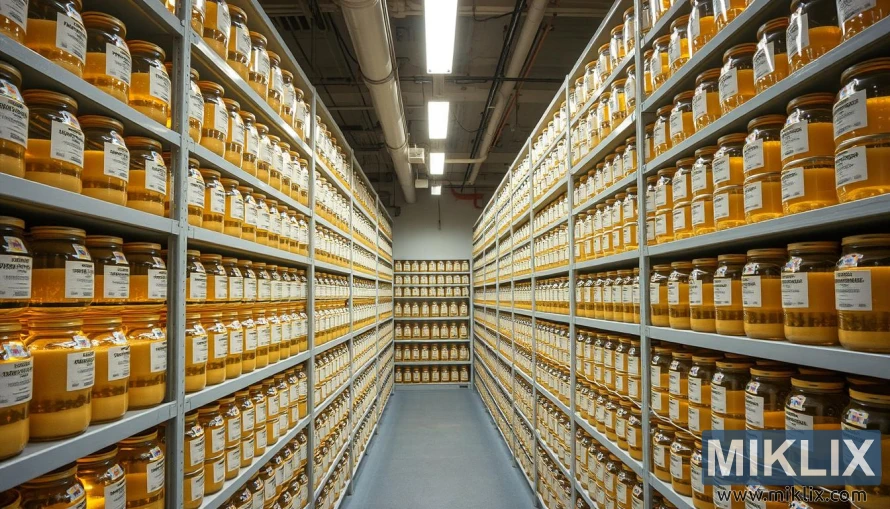
Common Brewing Challenges and Solutions
Fermentis SafAle T-58 yeast is versatile but brewers may face common issues. It's vital to grasp these challenges and their solutions for top-notch brewing results.
One major problem is fermentation-related. This includes slow or stuck fermentation. It can stem from too little yeast, wrong temperatures, or poor wort aeration.
- Inadequate Yeast Pitching Rates: Ensure the correct amount of yeast is pitched according to the manufacturer's guidelines or brewing standards.
- Incorrect Fermentation Temperatures: Monitor and maintain the optimal temperature range for SafAle T-58, typically between 64°F to 75°F (18°C to 24°C), depending on the specific beer style.
- Poor Wort Aeration: Adequate aeration is critical for yeast growth and fermentation. Ensure sufficient oxygenation of the wort before pitching the yeast.
Flavor and aroma issues are another challenge brewers face. Off-flavors, esters, or missing flavor compounds can arise from yeast strain, fermentation conditions, and brewing practices.
- Control Fermentation Temperature: Maintaining the optimal temperature range can help minimize unwanted flavor and aroma compounds.
- Monitor Yeast Health: Healthy yeast is key for successful fermentation. Ensure yeast is stored properly and pitched in the right condition.
- Adjust Pitching Rates: The right pitching rate can help achieve a balanced fermentation and desired flavor profile.
By understanding these common brewing challenges and implementing the suggested solutions, brewers can enhance their fermentation outcomes. This will help produce beers with the desired characteristics when using Fermentis SafAle T-58 yeast.
Recipe Development and Recommendations
Brewing with SafAle T-58 yeast opens up a world of complex and nuanced beers. Its unique fermentation profile makes it versatile across various beer styles. This includes ales, lagers, and even ciders and meads.
When crafting beer recipes with SafAle T-58, consider its fruity and floral flavor capabilities. This yeast is perfect for beers where these flavors are key.
- Experiment with different hop varieties to complement the fruity flavors produced by SafAle T-58.
- Use a combination of specialty malts to add complexity and depth to your beers.
- Adjust fermentation temperatures to fine-tune the flavor profile of your beer.
Some popular brewing recipes that utilize SafAle T-58 include:
- Belgian-style ales, where the yeast's fruity esters enhance the beer's complexity.
- American pale ales, benefiting from the yeast's clean fermentation profile.
- Fruit beers, where SafAle T-58 complements the fruit flavors without overpowering them.
Brewing recipes can also be influenced by the yeast's performance under different conditions. For instance, SafAle T-58 is known for its tolerance to high fermentation temperatures. This makes it suitable for brewing in warmer climates or during summer months.
To further enhance your brewing recipes, consider the following tips:
- Pitch the correct amount of yeast to ensure proper fermentation.
- Monitor fermentation progress closely to avoid over-fermentation.
- Store your beer in appropriate conditions to mature the flavors.
By incorporating Fermentis SafAle T-58 into your brewing repertoire and experimenting with different beer recipes, you can create a wide range of delicious and unique beers. These beers showcase the versatility of this yeast strain.
Conclusion
Brewing with Fermentis SafAle T-58 yeast provides a versatile and reliable option for creating high-quality beers across various styles. This yeast strain excels in its technical specifications and optimal fermentation conditions. It also contributes to the development of complex flavor profiles.
The compatibility of SafAle T-58 with a range of beer styles, from ales to lagers, makes it a valuable choice for brewers. Seeking consistency and quality, brewers find it essential. By understanding the preparation, pitching, and monitoring techniques, brewers can unlock the full benefits of this yeast strain.
Experimenting with Fermentis SafAle T-58 in different brewing contexts can lead to the creation of unique and captivating beers. As brewers continue to explore its capabilities, they can develop innovative recipes. They can also refine their brewing techniques to achieve exceptional results in beer fermentation.
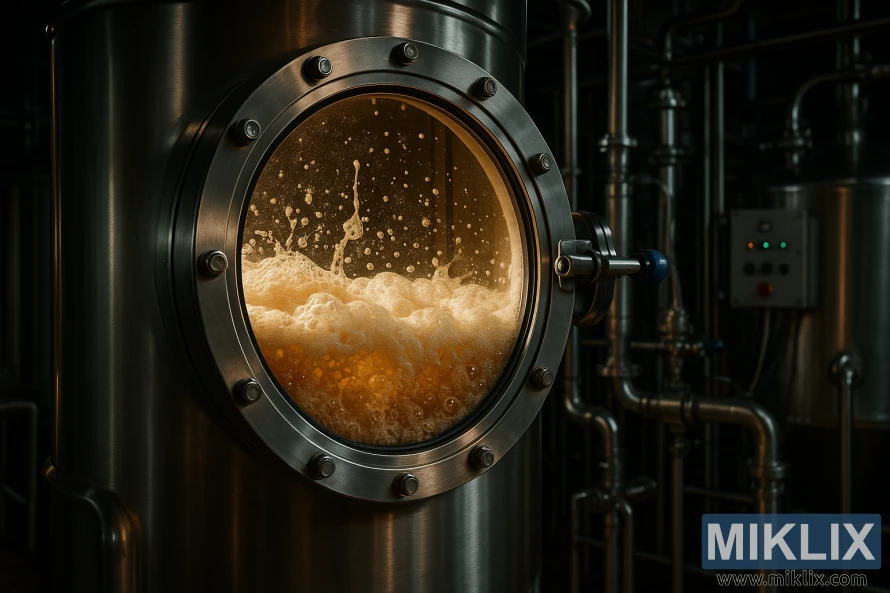
Further Reading
If you enjoyed this post, you may also like these suggestions:
- Fermenting Beer with Wyeast 3522 Belgian Ardennes Yeast
- Fermenting Beer with White Labs WLP005 British Ale Yeast
- Fermenting Beer with Fermentis SafBrew LA-01 Yeast
